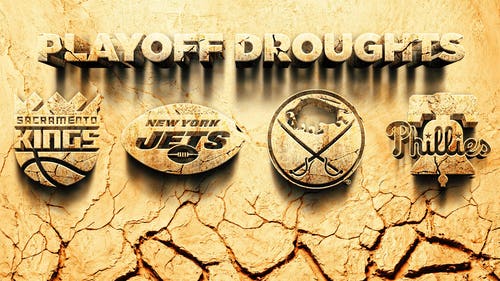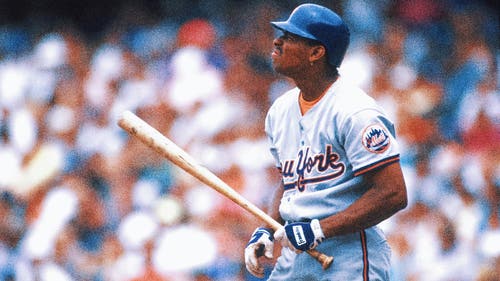
Should pro leagues allow PEDs?
If Lance Armstrong is the biggest lie in sports, Lyle Alzado was its spawn.
It has been 20 years since the brain cancer wasted away and eventually killed the once-hulking former NFL lineman. Steroids had been made a controlled substance by Congress a couple of years earlier, but the images of a gaunt Alzado and his assertions that steroid use had led to his illness did more to demonize steroids than any law could.
“You see all these reports that steroids cause heart disease, cancer, strokes and so on,” said Dr. Norman Fost, a professor of bioethics at the University of Wisconsin. “Then it gets repeated over and over again. There is not a single study out there that proves steroids cause any of these diseases.”
A decade after Alzado’s death, the steroid fervor hit its crescendo with the raids on Bay Area Lab Co-Operative (BALCO). Dozens of athletes — including baseball’s all-time home run champ Barry Bonds and elite sprinter Marion Jones — were alleged to have received banned substances. The term “performance-enhancing drugs” (PEDs) was instantly part of the American lexicon, although not many questioned why these were banned and what the result of the media attention would bring.
It could have done more harm than good.
“I think the increased attention of steroid use in sports has resulted in a larger number of people using steroids,” said Millard Baker, who runs a website that advocates the medical and non-medical use of steroids. “In the ’90s, people were naïve. Now, it’s in the news every single day. That’s given people a cheat sheet on how to improve performance — even if that’s for a basketball game on the weekends.”
Fost and Baker are certainly in the minority, but the topic of PEDs doesn’t grab the public’s attention as it once did. Blame the never-ending string of drug scandals, which continued in recent weeks as two Major League Baseball players — San Francisco Giants outfielder Melky Cabrera and Oakland A’s pitcher Bartolo Colon — received 50-game suspensions after testing positive for synthetic testosterone. Then, last Thursday, Armstrong, a seven-time Tour de France winner, announced he would give up his challenges to an investigation by the US Anti-Doping Agency (USADA).
USADA has banned Armstrong for life and has moved to strip him of all those Tour titles.
But maybe for the first time in the steroid era, the sanctions are moot. Armstrong is retired and while race promoters could go after him for some of his winnings, none of his major sponsors — a list that includes Nike, Oakley and Anheuser-Busch — have left him. Neither apparently have donors to his Livestrong cancer charity. On the day after Armstrong gave up his fight against USADA, he tweeted that donations were up 25 percent from the day before.
Armstrong doesn’t have to worry about gaining entry into a hall of fame like the federal government’s two other major targets, Bonds and seven-time Cy Young Award winner Roger Clemens. (Federal prosecutors dropped their investigation of Armstrong earlier this year.) Bonds was convicted on a single count of obstruction last year and was sentenced to a month of home confinement (a decision he’s appealing) and Clemens was acquitted on perjury and obstruction charges in June.
“It should be justice for one, justice for all,” BALCO founder Victor Conte told FOXSports.com. “All these athletes aren’t held to the same standard. That’s the problem I’ve had with these investigations. Clearly, it’s selective prosecution. There were probably 10 players involved with BALCO where the feds had similar evidence, but they targeted Barry Bonds.”
In zoning in on Armstrong, USADA allegedly cut deals with other riders guilty of doping for information. The result: Armstrong likely will have to give up his Tour titles to another rider who also might have doped in a sport that — especially a decade ago — was as drug-tinged as any in history.
“Lance Armstrong was as clean as any other rider,” said Charles Yesalis, a former professor at Penn State. “That’s what’s so hypocritical about the whole thing. One might argue that he’s just being picked on.”
USADA CEO Travis Tygart sees the sanctions against Armstrong has a victory for clean athletes. “Anti-doping efforts have been worth it, and we hear that all the time,” he told FOXSports.com. “Today’s clean athletes don’t have to quit the sport they love and have the dreams crushed or use dangerous performance-enhancing drugs to cheat and stay competitive.”
Yesalis countered there is only one way to level the playing field in sports, especially since evading positive tests is commonplace. Armstrong never tested positive in his career, nor did Bonds or Clemens. Only one athlete out of more than 6,000 tests at the 2012 Olympics — Belarusian shot putter Nadzeya Ostapchuk — was flagged for an anabolic substance even as anti-doping officials admit the rate of use of such drugs is exponentially higher.
“Get rid of drug testing,” Yesalis said. “Do you really think we had a clean Olympics? All testing does is to continue to perpetuate the myth that sports are clean.”
That’s not a prospect that American swimmer Kicker Vencill, once caught up in the anti-doping net through no fault of his own, would like to see. Vencill missed his shot at the 2004 Olympics when he received a two-year ban after taking a tainted vitamin supplement. He sued the manufacturer and won a judgment because of the contamination in 2005.
“I don’t think there are many athletes or even the public would want to see what that (ending drug testing) would do,” Vencill said. “No matter where you are or what’s going on in your life, sports have a way of bringing out the kid in all of us. I think not testing would really change people’s perspective.”
Fost said legalization of PEDs would allow those substances to be effectively prescribed by physicians and adequate studies to be conducted on such drugs, something that is all but impossible under current federal regulations.
“Legalization would also allow the drugs to be manufactured in FDA-regulated facilities, so athletes could be more confident about dosing, purity, contamination and other safety issues,” Fost said. “The present system drives them to obtain drugs from manufacturers who have no oversight, increasing the risk of harm.”
Vencill fears that some athletes would take use of PEDs to an extreme in that environment.
“You are not only protecting the integrity of the game (with testing), but you are also protecting the athletes from themselves,” he said. “Some athletes, I’m sure, would probably take matters into their own hands and things could get out of control.”
Still, Fost contends that chemically enhancing your body shouldn’t be seen any differently than other evolutions in the sporting landscape.
“Athletes can sleep in (elevation-mimicking) hypoxic chambers, vaulters use fiberglass poles and riders can use the fastest bikes,” Fost said. “Why shouldn’t athletes be able to take advantage of the latest (doping) technology? People have been doing it since the beginning of time. Fans aren’t turned off by it. It’s quite the opposite, really. Barry Bonds was one of the biggest draws in sports, and Mark McGwire and Sammy Sosa brought the fans out in droves during their home run chase. People want to see bigger, stronger, faster athletes hit home runs and Olympic records being set.”
Don Hooton, whose son Taylor committed suicide at age 17 after abruptly halting a cycle of steroids, hopes that day never comes to pass. He runs the Taylor Hooton Foundation, which is slated to educate 250,000 high school students about the ills of steroid use this year alone. The organization’s website lists some of the alleged ills of steroid abuse, including mood swings (‘roid rage), hallucinations and gynocomastia (male breast development).
Few of those side effects have been proven by science, but Dr. Gary Wadler, a longtime medical advisor of the foundation, said the body can be seriously damaged by steroid use, especially the heart.
“To study the use of steroids at the levels athletes currently use them is not going to happen,” said Wadler, a New York internist who is a former chairman of the World Anti-Doping Agency's (WADA) prohibited list and methods subcommittee. “We don’t allow people to take things that will hurt themselves (in studies). We can’t tell athletes to take doping doses of steroids over a long period of time just to see how many get sick and die. No institutional review board would allow that study to take place.”
Therapeutic use of testosterone has been shown to be safe. A 1996 paper on use of synthetic testosterone published in The New England Journal of Medicine showed notable gains in strength with no major side effects other than a handful of cases of breast tenderness and increased acne among the 40 men ages 19-40 who completed the study.
Wadler says doping athletes are using much higher doses than those in that study. And steroid use among teens is thought to be much more hazardous.
“We have talked with enough other families who have been through what we’ve been through to know this is a problem,” Hooton said. “I’ve had kids come up to me after one of our presentations and tell me, ‘Mr. Hooton, I’m sorry for what happened to Taylor, but, between you and me, I know how Taylor felt. I did steroids and when I quit, I felt like he did. The only thing is that I didn’t commit suicide.’ ”
And Fost, a pediatrician, is by no means advocating PED use by juveniles.
“There are some risks for children that aren't relevant for adults — particularly stunting of growth — and children are generally less capable of making informed choices than adults,” Fost said. “I am in favor of testing programs in middle schools and high schools, not to punish the children, but to identify the sellers with harsh penalties for them.”
Fost adds that the message that legalization of PEDs would send to children is no different than the one sent by two regulated vices: alcohol and tobacco. “The difference is that smoking kills 400,000 people a year, almost all of whom become addicted in adolescence, and drinking kills tens of thousands, many of them children,” Fost said. “Deaths attributable to steroids are extraordinarily rare.”
Hooton said despite the added awareness created by his group, Congressional inquiries and federal investigations, more teens are doing steroids now than ever before. “The feedback we’re getting from kids is that the problem has not diminished,” he said. “It’s as wide open as it ever was.”
It’s certainly no longer a shock to hear an athlete get linked to performance-enhancing drugs. It can cost an athlete millions, at least those not named “Armstrong.” (Armstrong continues to deny he doped, even if he gave up his fight.) But the use of PEDs, as testing statistics show, remains largely a consequence-free environment.
Maybe acceptance is the 12th step of the steroid era.
“This could be the tipping point,” Baker said of Armstrong. “He’s a person so many people like due to his charitable work. He’s admired as a person, not just an athlete. People see this and realize that nothing was accomplished by all these doping investigations. It’s just been one major witch hunt and a waste of taxpayer money.”










